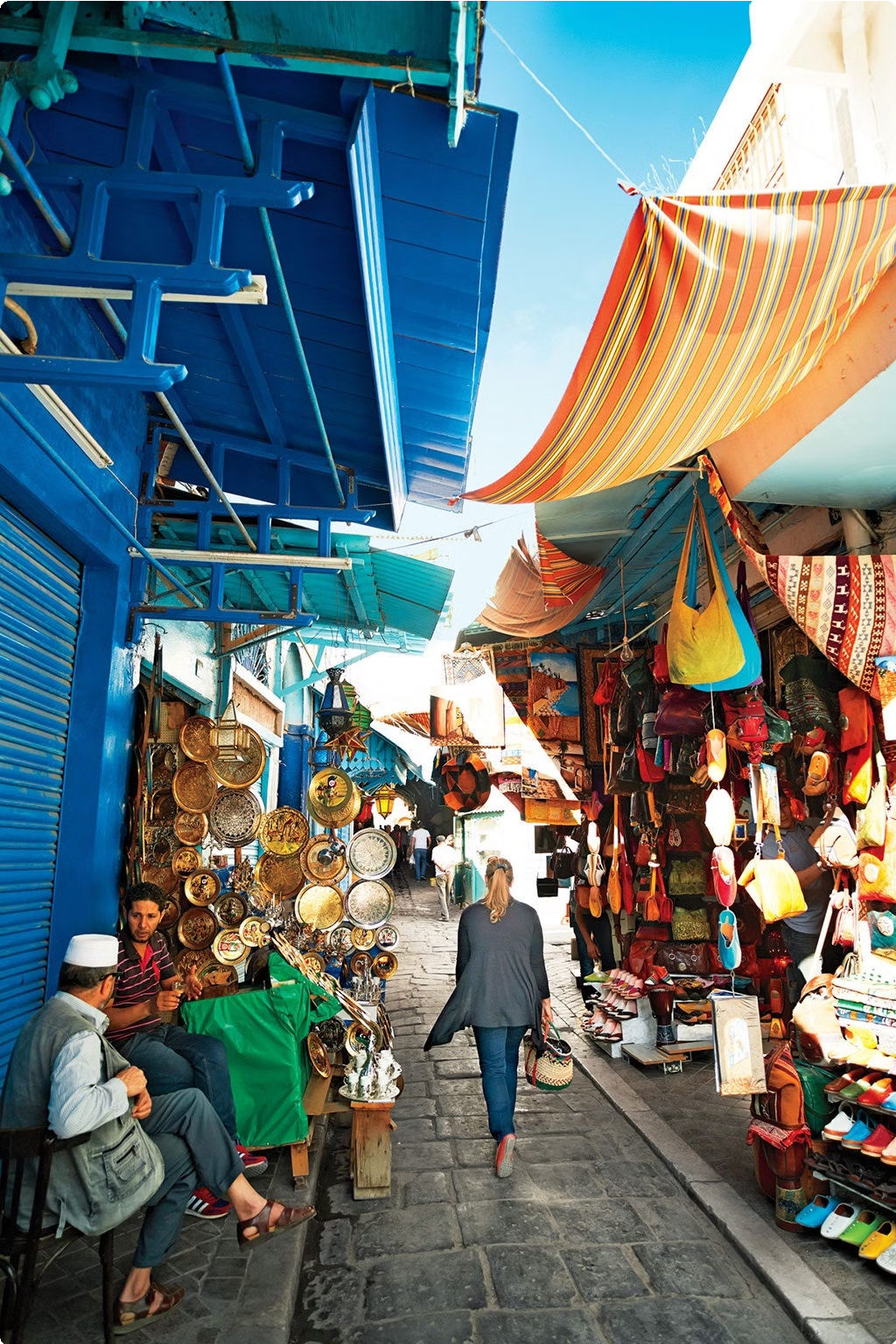Tunisia
Discover Tunisia
Tunisia, located in North Africa, is known for its rich history, diverse culture, and stunning landscapes. With its beautiful Mediterranean coastline, vibrant souks, and ancient ruins, it offers a unique blend of modernity and tradition. The country boasts a fascinating mix of Arab, Berber, and Mediterranean influences, evident in its language, cuisine, and architecture. From the bustling streets of Tunis to the breathtaking Sahara Desert, Tunisia is a treasure trove of experiences waiting to be explored.
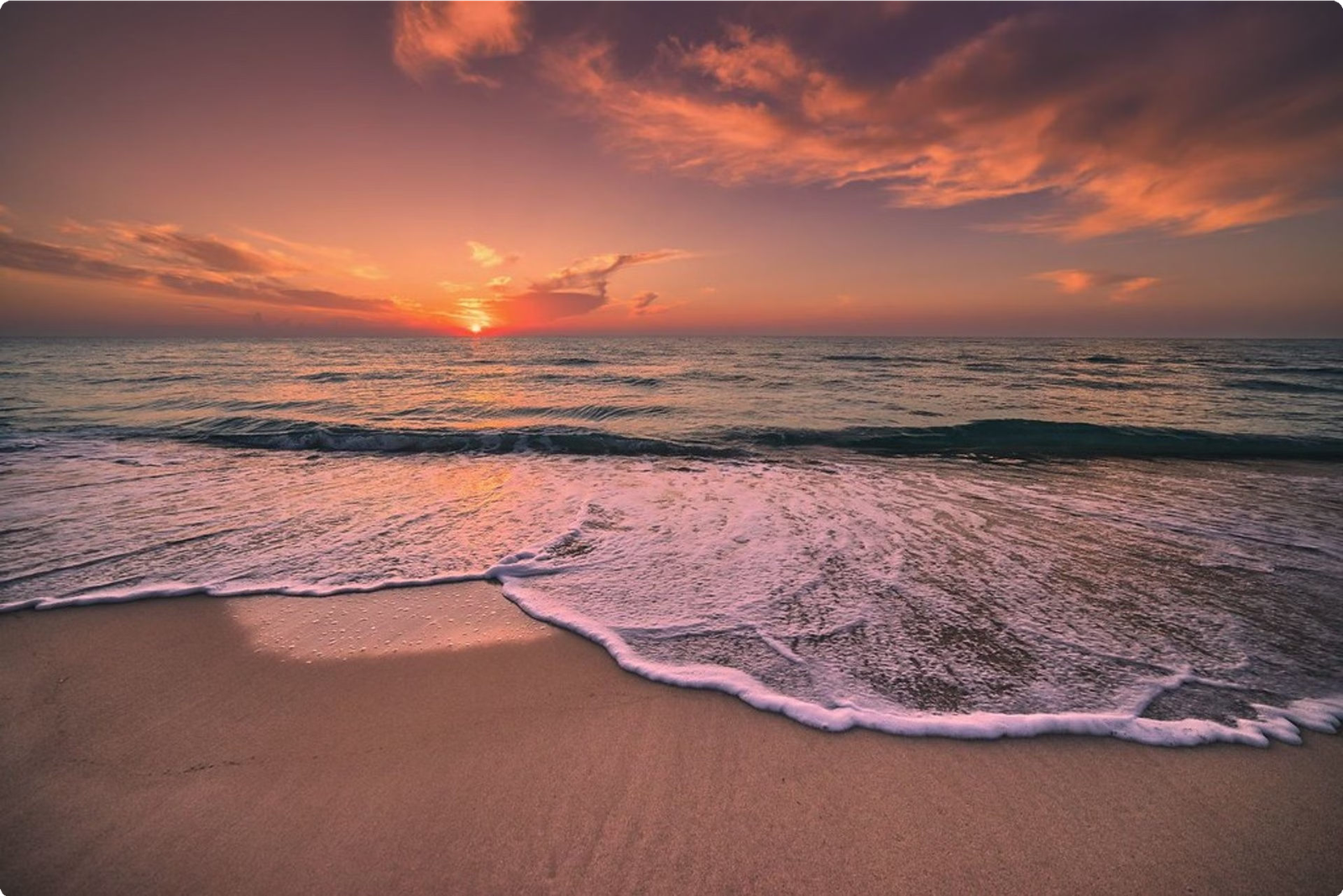
Tunisian Flag
The Tunisian flag is a red and white flag with a red crescent and a five-pointed star in the center. This flag symbolizes the blood shed by martyrs in the country’s struggle for independence and the predominance of Islam. The red color represents the resistance against oppression, white symbolizes peace, and the star and crescent are traditional symbols of Islam. The flag was officially adopted in 1831 and has a rich historical significance.
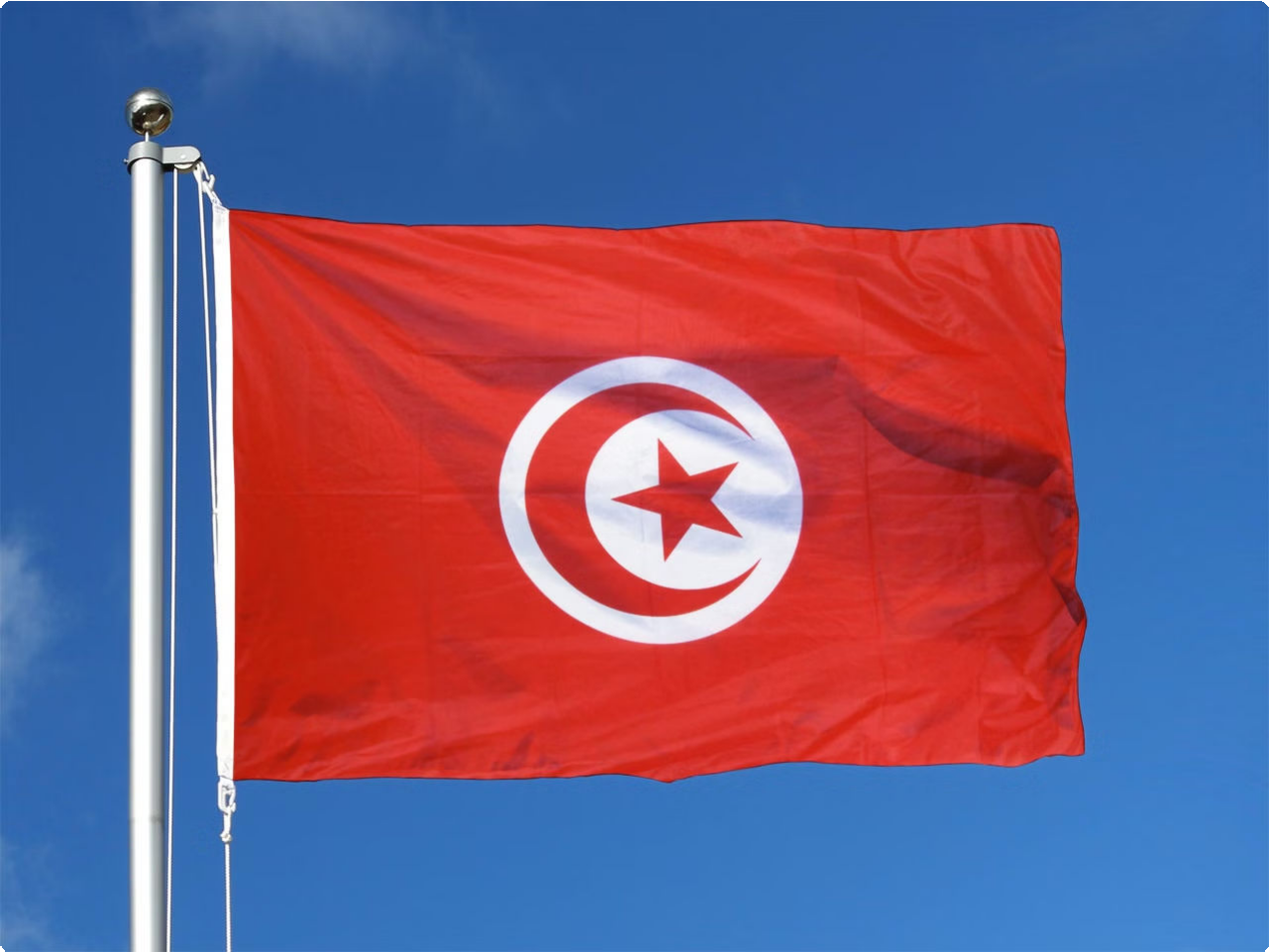
Map of Tunisia
Tunisia, the northernmost country in Africa, is known for its stunning landscapes, diverse culture, and rich history. The country’s map showcases a blend of Mediterranean coastline, the Atlas Mountains, and the expansive Sahara Desert. It provides a visual representation of the country’s key cities, towns, and topographical features. The map is essential for travelers looking to explore Tunisia’s various regions and attractions, from ancient ruins to vibrant cities.
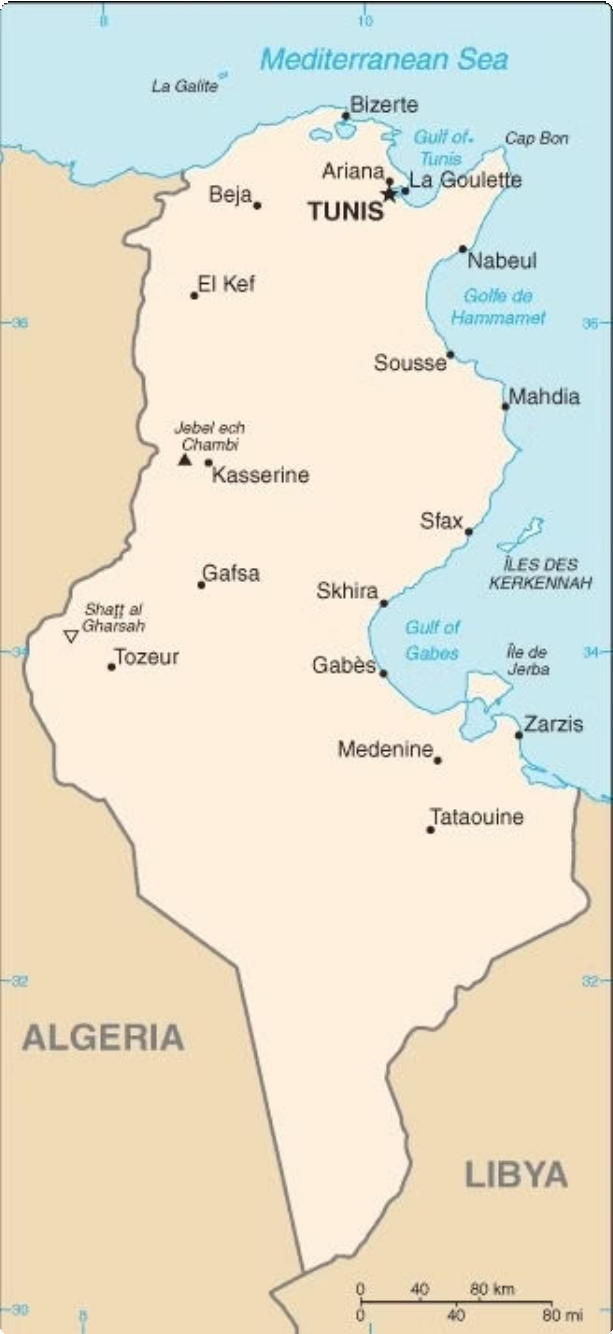
Currency of Tunisia
Currency Name: The official currency of Tunisia is the Tunisian Dinar (TND).
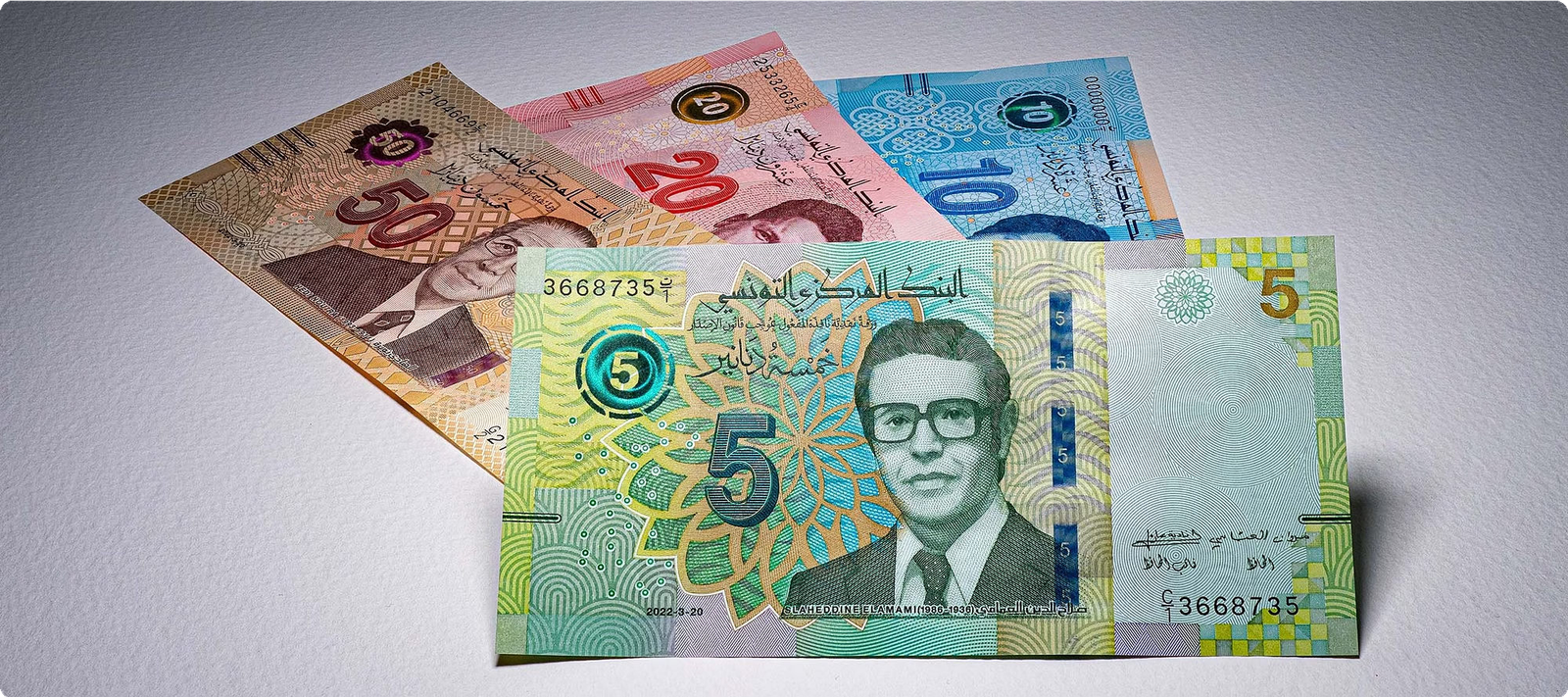
Subunits: The dinar is further divided into 1000-millime subunits.
Exchange Rate: The exchange rate as of [current year] is approximately [exchange rate] TND to 1 USD.
Exchange Facilities: Visitors can conveniently exchange their currency at banks, exchange offices, and major hotels.
Accepted Payment: Most businesses in Tunisia accept major credit cards such as Visa and Mastercard, but it’s advisable to carry some cash for small purchases and markets.
Economy of Tunisia
Growing Sectors: Tunisia’s economy is diverse, with key sectors including agriculture, mining, manufacturing, and services. The agricultural sector plays a significant role in the economy, producing olives, grains, and citrus fruits for both domestic consumption and export.
Tourism: The tourism industry is a major contributor to Tunisia’s economy, attracting visitors with its beautiful Mediterranean beaches, historic sites, and vibrant cultural heritage. The country’s rich history and diverse landscapes make it a popular destination for travelers from around the world.
Challenges and Opportunities: Tunisia faces economic challenges, including high unemployment rates, particularly among the youth. However, recent initiatives to promote entrepreneurship and innovation are creating new opportunities for economic growth and development.
Culture of Tunisia
Rich Heritage: Tunisia’s culture is a vibrant tapestry woven with influences from Phoenician, Roman, Arab, and French civilizations. This diverse heritage is evident in the country’s architecture, art, and traditions.
Celebrations and Festivals: The Tunisian people celebrate a variety of festivals throughout the year, such as the colorful Carthage International Festival, the traditional date festival in Tozeur, and the religious Eid al-Fitr and Eid al-Adha.
Traditional Crafts: Tunisian artisans are skilled in crafting intricate pottery, leatherwork, and carpets. The medina of Tunis is a treasure trove of traditional crafts and handmade goods.
Traditional Dances in Tunisia
Tunisia is rich in traditional dances that reflect its diverse cultural heritage. One of the most popular traditional dances is the “Stambali,” which is performed to rhythmic music and has spiritual and healing significance. Another well-known dance is the “Folkloric Tunisian dance,” which varies by region and is characterized by lively movements and colorful costumes.
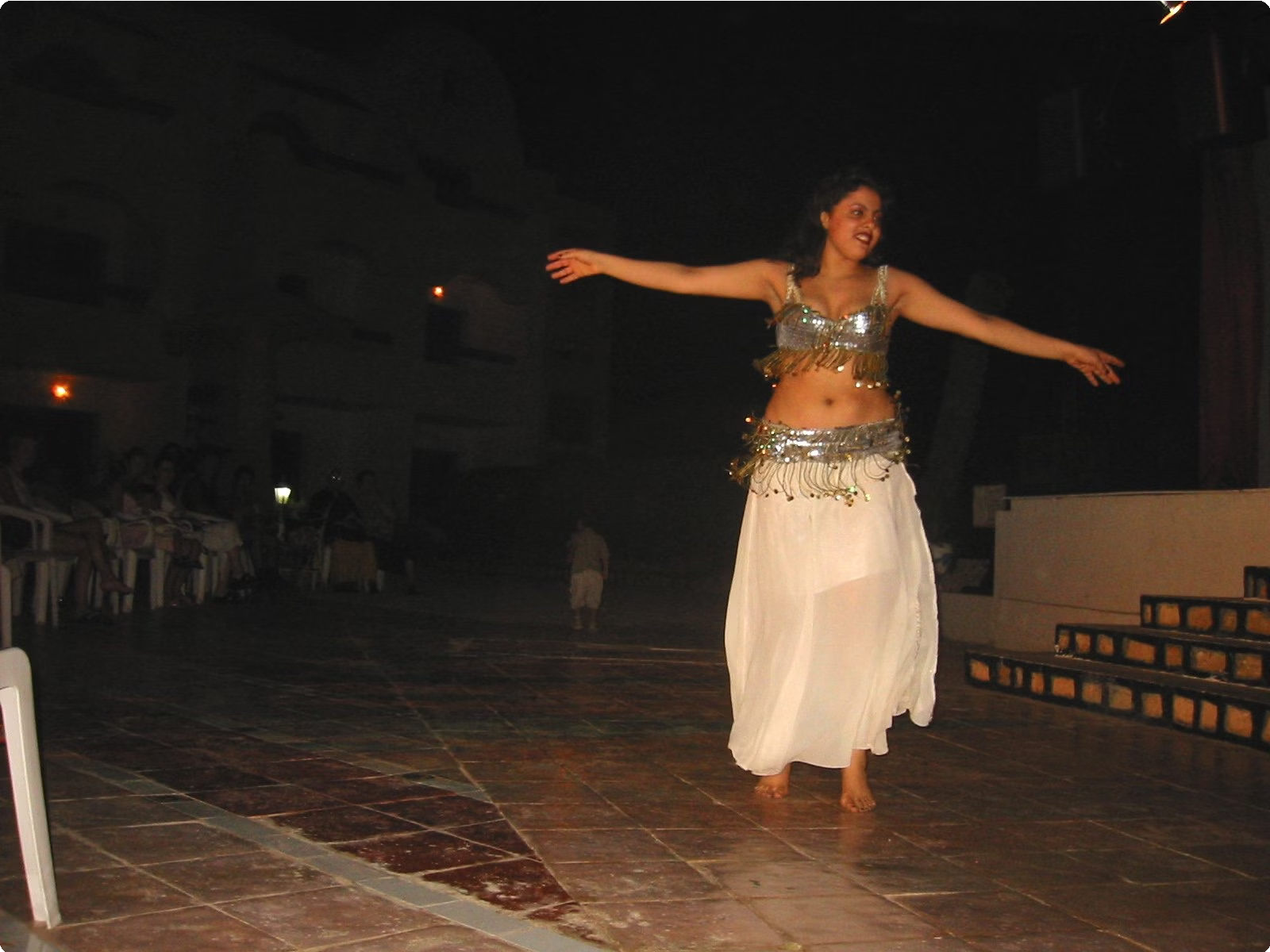
The “Malouf” is a traditional Andalusian dance, brought to Tunisia by the Moors. It features elegant and graceful movements, reflecting the influence of Andalusian culture. Additionally, the “Mezwed” dance is popular in rural areas, accompanied by a distinct form of music played on traditional instruments.
These traditional dances are an integral part of Tunisian cultural celebrations, weddings, and festivals, showcasing the spirit and vibrancy of the Tunisian people.
Tunisian Cuisine

Couscous: A staple in Tunisian cuisine, couscous is typically served with meat, vegetables, and fragrant spices. It is a symbol of hospitality and is often prepared for special occasions.
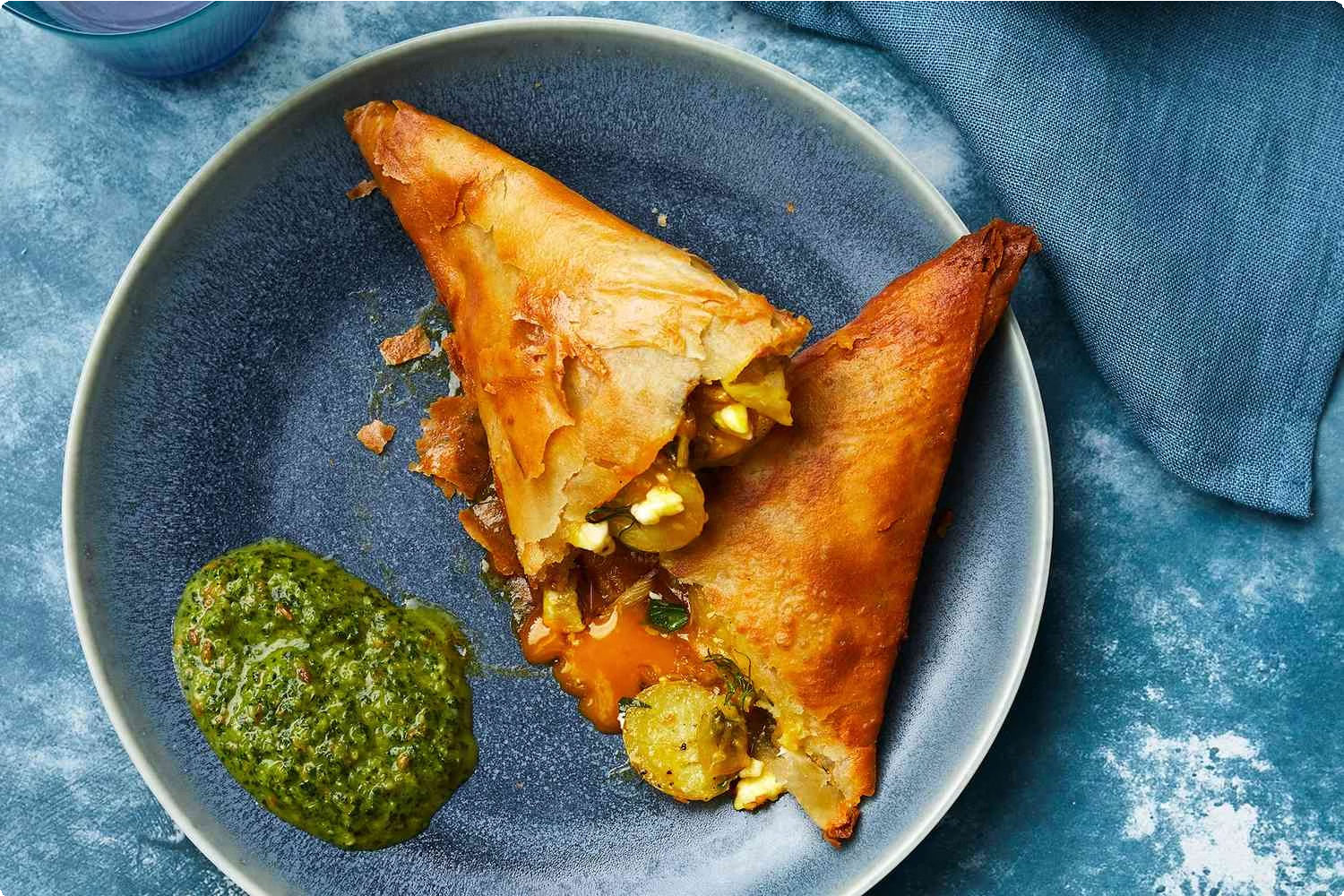
Brik: A popular savory pastry filled with egg, tuna, parsley, and capers. It is fried until crispy and is commonly enjoyed as a snack or appetizer.

Chakchouka: A flavorful dish made of tomatoes, peppers, onions, and eggs, seasoned with cumin and paprika. It is often served with crusty bread for a hearty breakfast or brunch.
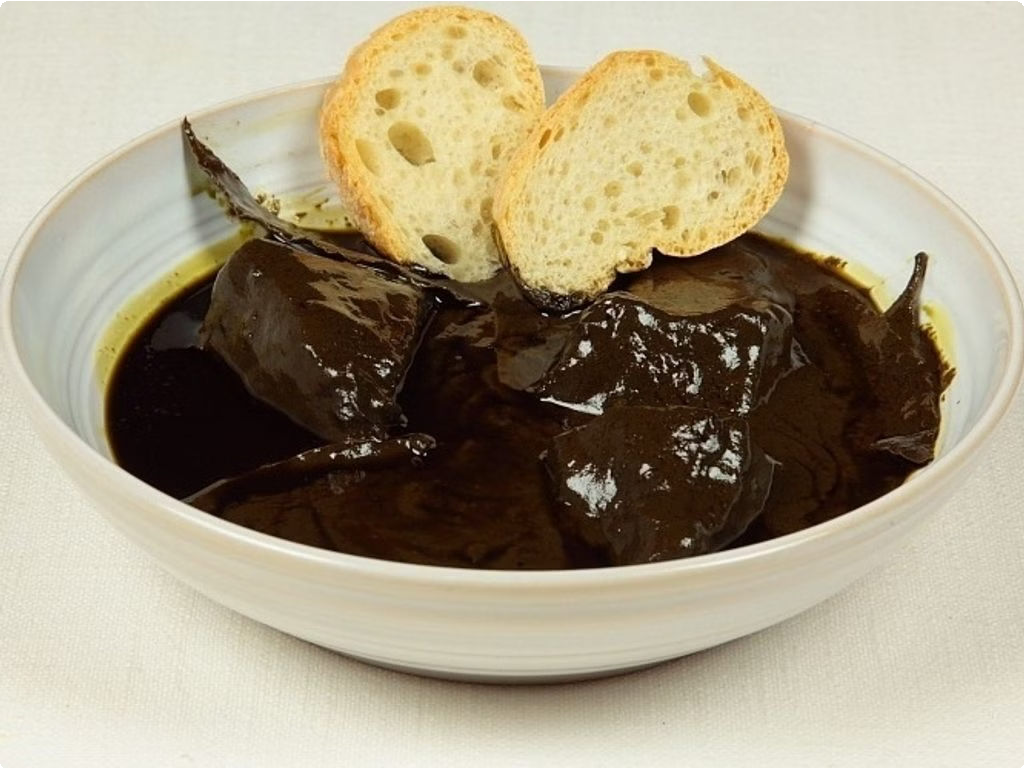
Mloukhiya: A stew featuring jute leaves cooked with rich broth, garlic, and a blend of aromatic spices. It is usually accompanied by tender lamb or chicken.

Makroudh: These date-filled semolina cookies are a beloved sweet treat in Tunisia. They are often shaped into diamond patterns and dusted with powdered sugar.
Famous Celebrities from Tunisia
Leila Ben Ali
Leila Ben Ali, the former First Lady of Tunisia, was known for her involvement in women’s rights and numerous charity initiatives during her time in office.

Ahmed Ben Bella
Ahmed Ben Bella, a significant figure in Tunisia’s history, was the first President of Algeria and played a crucial role in the country’s fight for independence.
Best cities to visit in Tunisia
Tunis: The capital city of Tunisia, Tunis is a vibrant mix of modernity and tradition. Visitors can explore the historic medina, visit the Bardo National Museum, and enjoy the bustling markets.
Sfax: Known for its well-preserved medieval walls and historic city center, Sfax offers a glimpse into Tunisia’s rich history and is a great place to experience traditional Tunisian culture.
Sousse: A coastal city known for its beautiful beaches, Sousse also boasts an impressive archaeological museum, a lively medina, and the stunning Ribat fortress.
Ettadhamen: This bustling suburb of Tunis provides an authentic experience of daily life in Tunisia, with colorful markets, bustling streets, and friendly locals.
Tunis
Tunis is the capital and largest city of Tunisia, situated on the Gulf of Tunis and located in northern Tunisia. The city is known for its fascinating blend of ancient and modern influences, featuring a historic medina with narrow winding streets and modern developments. Visitors to Tunis can explore the picturesque landmarks, including the Zitouna Mosque, the Bardo National Museum, and the stunning views from Byrsa Hill.

The Medina of Tunis, a UNESCO World Heritage Site, offers a glimpse into the city’s rich history, with its traditional architecture and bustling souks. Additionally, Tunis is a hub for cultural events, with theaters, art galleries, and vibrant music festivals showcasing the diversity of Tunisian arts and entertainment.
Sfax
Sfax, also known as ‘Taparura’ in ancient times, is a vibrant city located on the eastern coast of Tunisia. It is the country’s second-largest city and an important center for trade and industry. The city is characterized by its rich history, with remnants of its past as a major trading hub still visible in its architecture and cultural heritage.
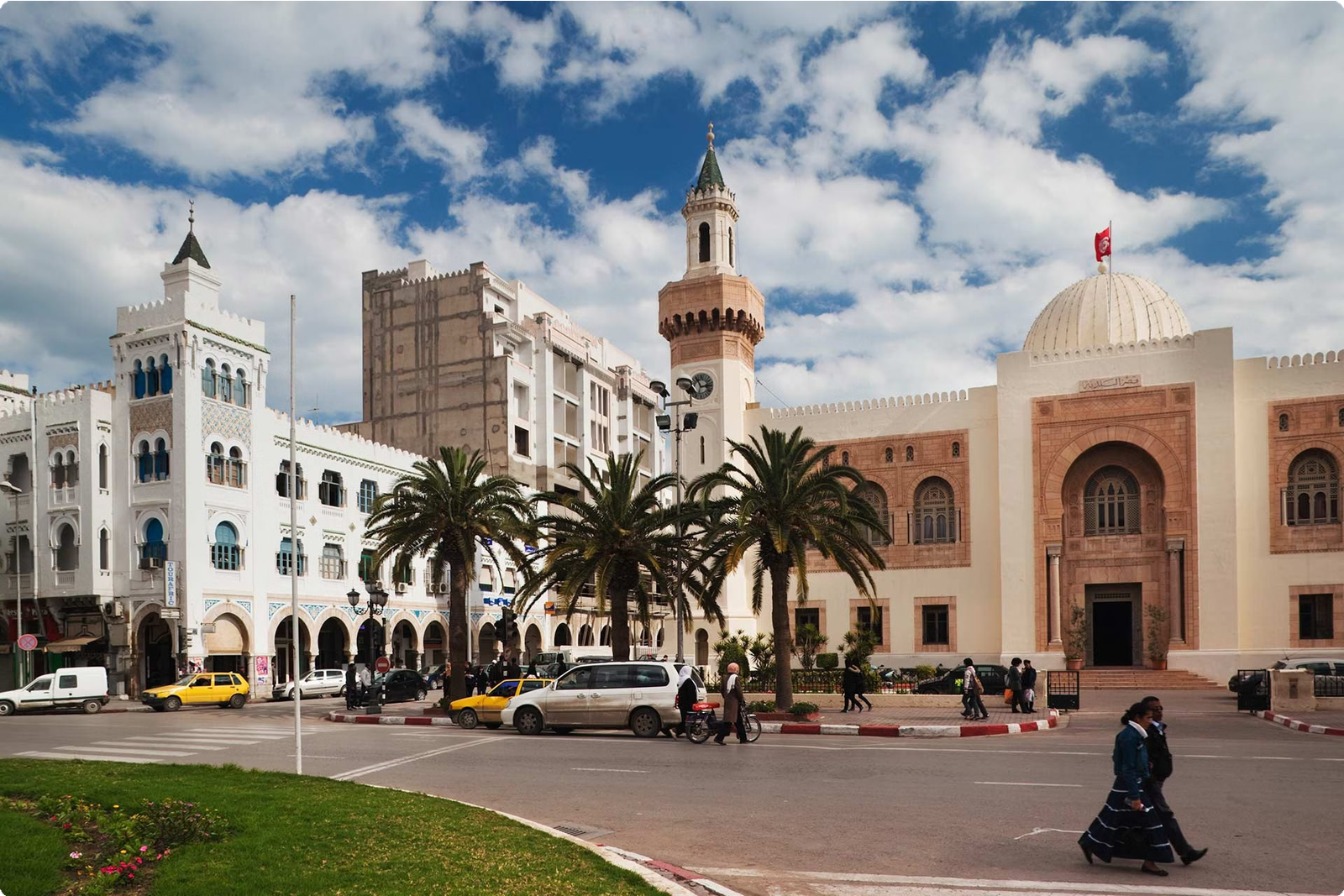
Visitors to Sfax can explore the charming old town with its narrow alleyways, bustling souks, and impressive city walls. The city is also renowned for its ornate mosques, historic buildings, and traditional markets offering an authentic glimpse into Tunisian life.
With a thriving fishing industry and a bustling port, Sfax offers a unique charm for travelers seeking to experience the authentic atmosphere of a traditional Tunisian city.
Sousse
Sousse is a beautiful coastal city located in eastern Tunisia with a rich history and stunning beaches. It is known for its picturesque medina, an old walled city with narrow streets and traditional markets. The city also boasts a vibrant atmosphere, blending modern amenities with historic charm. Sousse is a popular tourist destination, attracting visitors with its inviting beaches, clear blue waters, and a wide range of water sports activities.

The city’s history is evident in its ancient landmarks, such as the historic Great Mosque, a symbol of Islamic architecture, and the iconic Ribat, a fortress-like structure offering panoramic views of the city and sea. Sousse is also famous for its lively nightlife, with an abundance of restaurants, cafes, and nightclubs that make it an entertaining escape for visitors.
- Explore the enchanting Medina, a UNESCO World Heritage site
- Visit the Sousse Archaeological Museum to learn about the city’s rich history
- Relax on the beautiful beaches and enjoy various water activities
Ettadhamen
Ettadhamen is a suburb located in the northern part of Tunis, the capital city of Tunisia. It is known for its vibrant and bustling streets, offering a glimpse into the daily life of the local residents. The area is characterized by colorful markets, traditional cafes, and a lively atmosphere. Ettadhamen is also home to various cultural landmarks and community centers that play a significant role in the social fabric of the region.
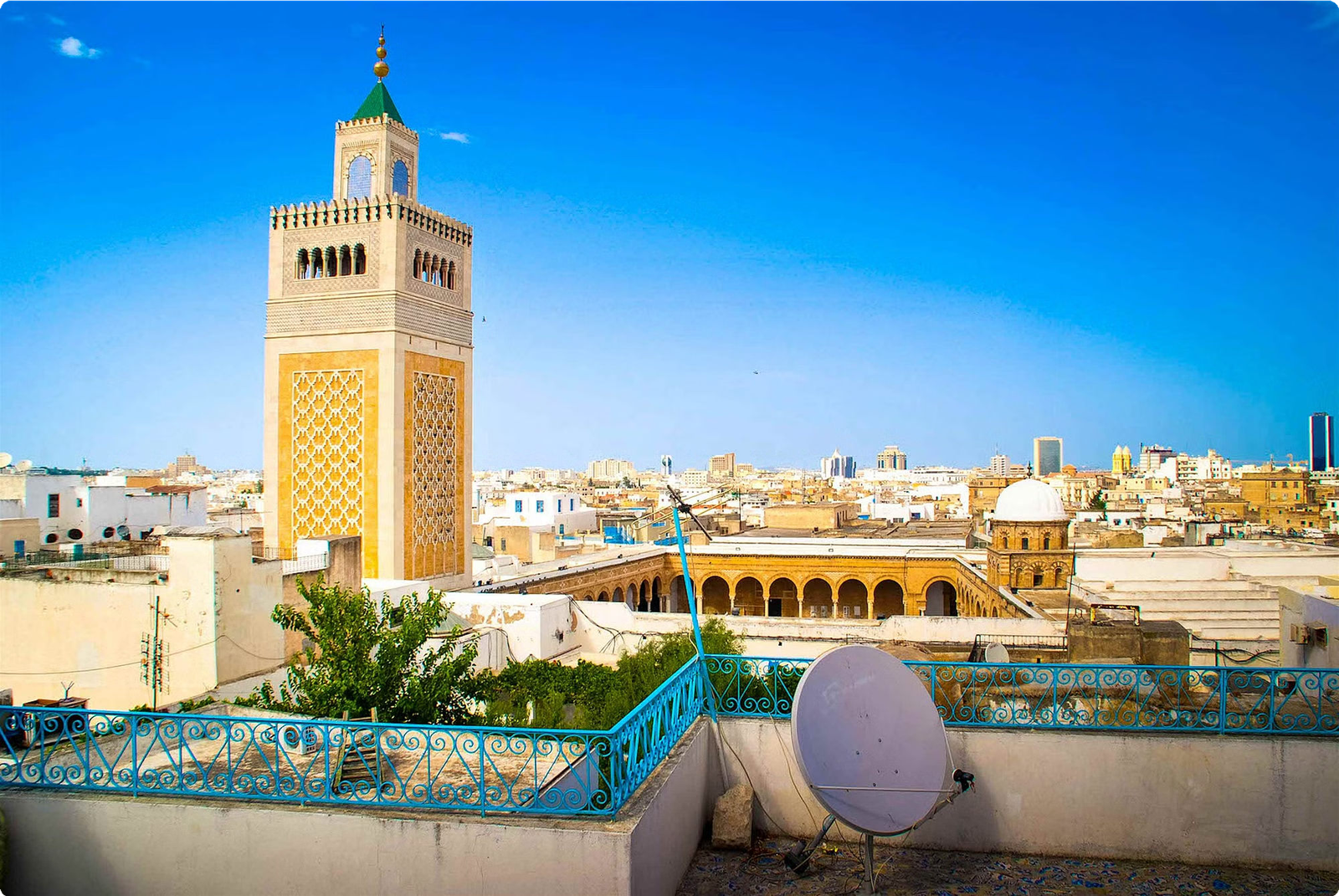
Visitors to Ettadhamen can immerse themselves in the authentic Tunisian culture, interact with the friendly locals, and explore the unique blend of modern and traditional elements that define the area. Additionally, the architecture and urban landscape of Ettadhamen provide a fascinating insight into the everyday experiences of the residents, making it a noteworthy destination for cultural exploration.
Top Tourist Attractions in Tunisia
Carthage Ruins
Carthage, once a powerful city of the ancient Mediterranean, was the center of the Carthaginian Empire. The ruins offer a glimpse into the rich history of this civilization, with remnants of baths, theaters, and the renowned Carthage Museum.
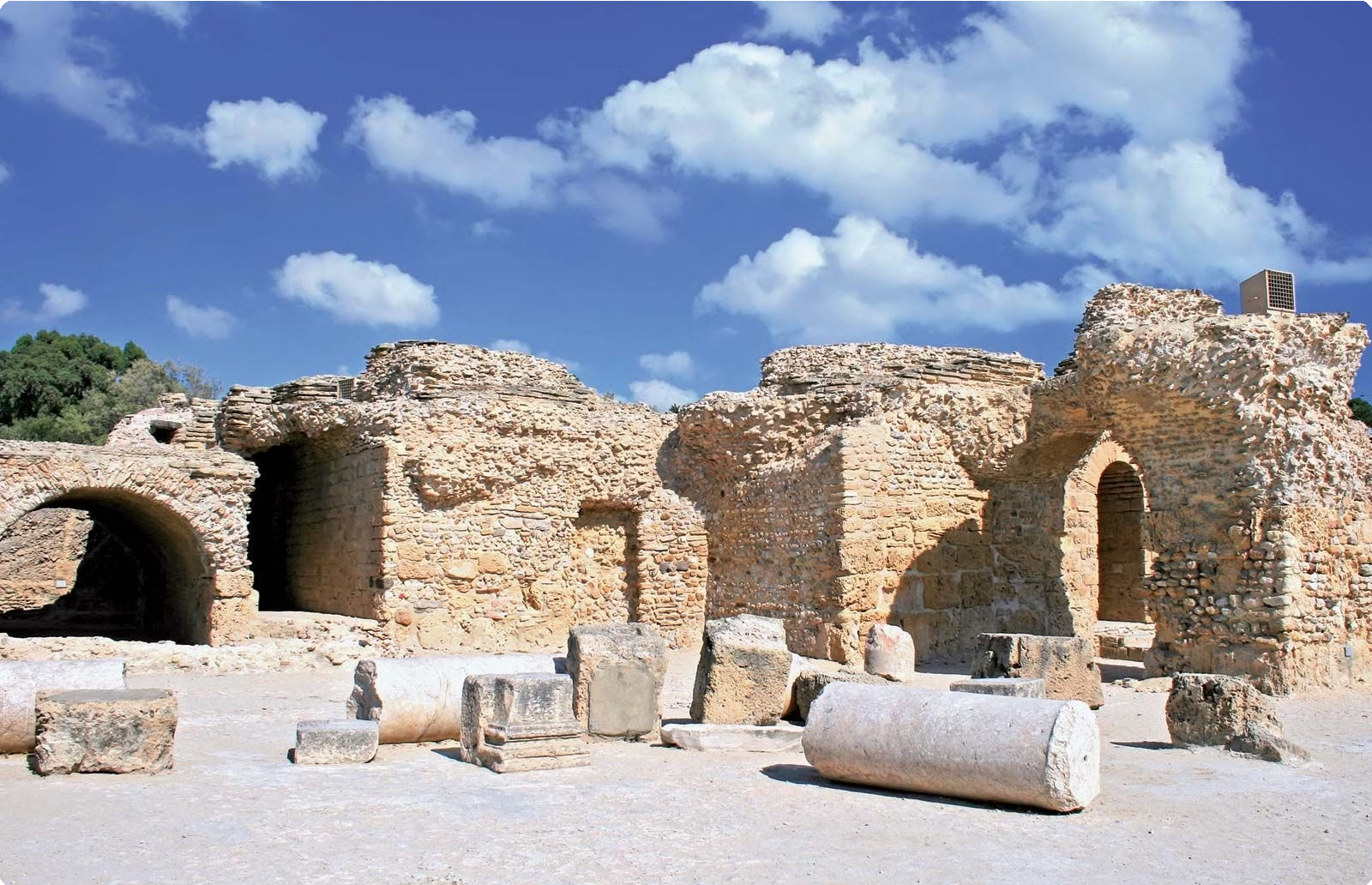
Dougga Archaeological Site
Dougga, an ancient Roman town, is home to well-preserved ruins, including a Capitol, temples, and a theater. This UNESCO World Heritage site provides a window into the Roman influence on Tunisia.
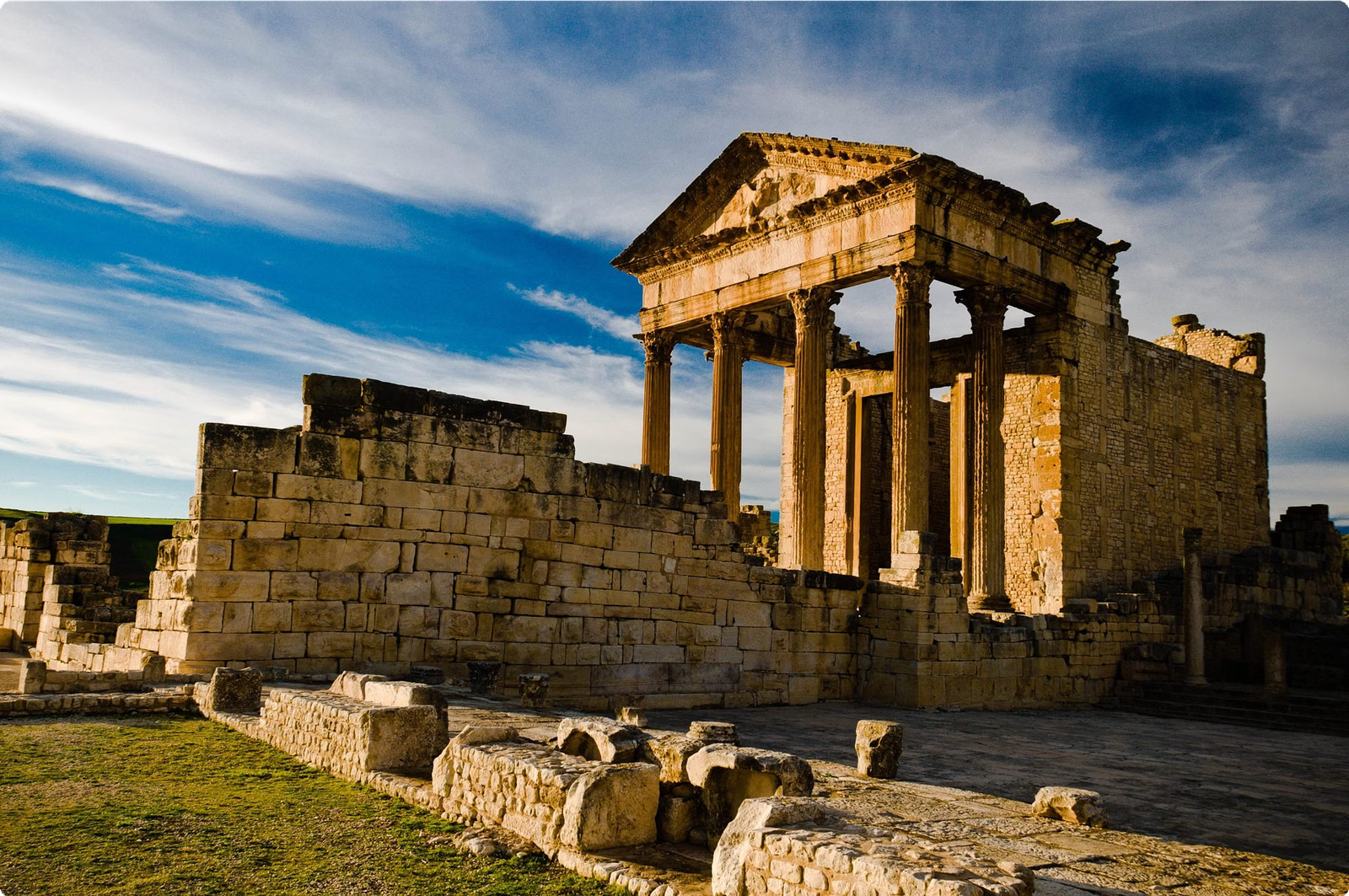
El Djem Amphitheatre
The El Djem Amphitheatre is one of the best-preserved Roman amphitheaters in the world. Its impressive architecture and historical significance make it a must-visit site for history enthusiasts.
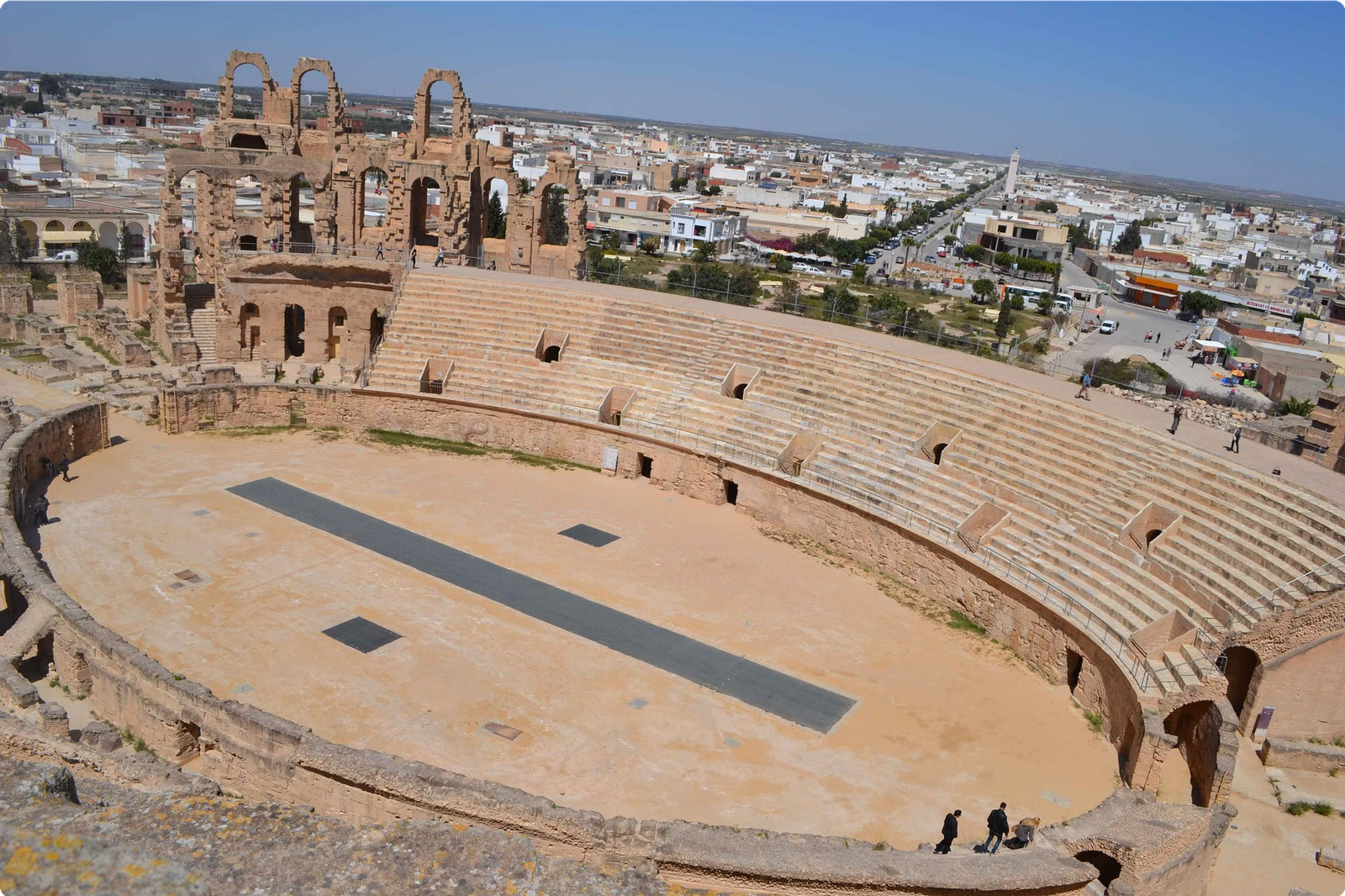
Kairouan Great Mosque
Considered one of the most important Islamic monuments in North Africa, the Great Mosque of Kairouan is renowned for its stunning architecture and spiritual significance, serving as a symbol of the country’s religious heritage.
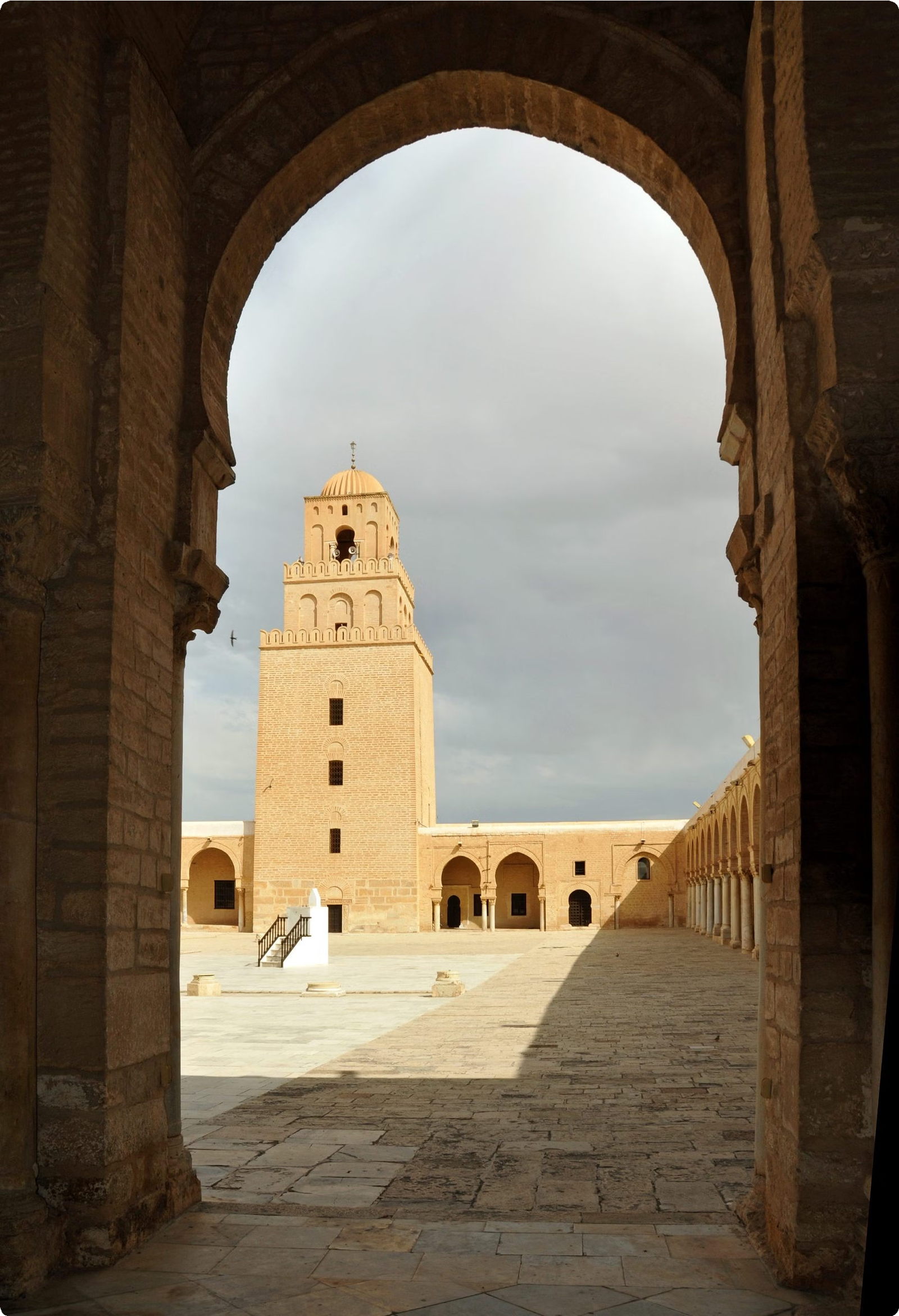
Beaches in Tunisia
Sidi Bou Said Beach
Sidi Bou Said Beach is an iconic destination known for its stunning blue waters and picturesque white buildings, creating a captivating contrast against the Mediterranean coastline. Visitors can enjoy the serene atmosphere and take leisurely strolls along the sandy shore, admiring the traditional Tunisian architecture that dots the landscape.
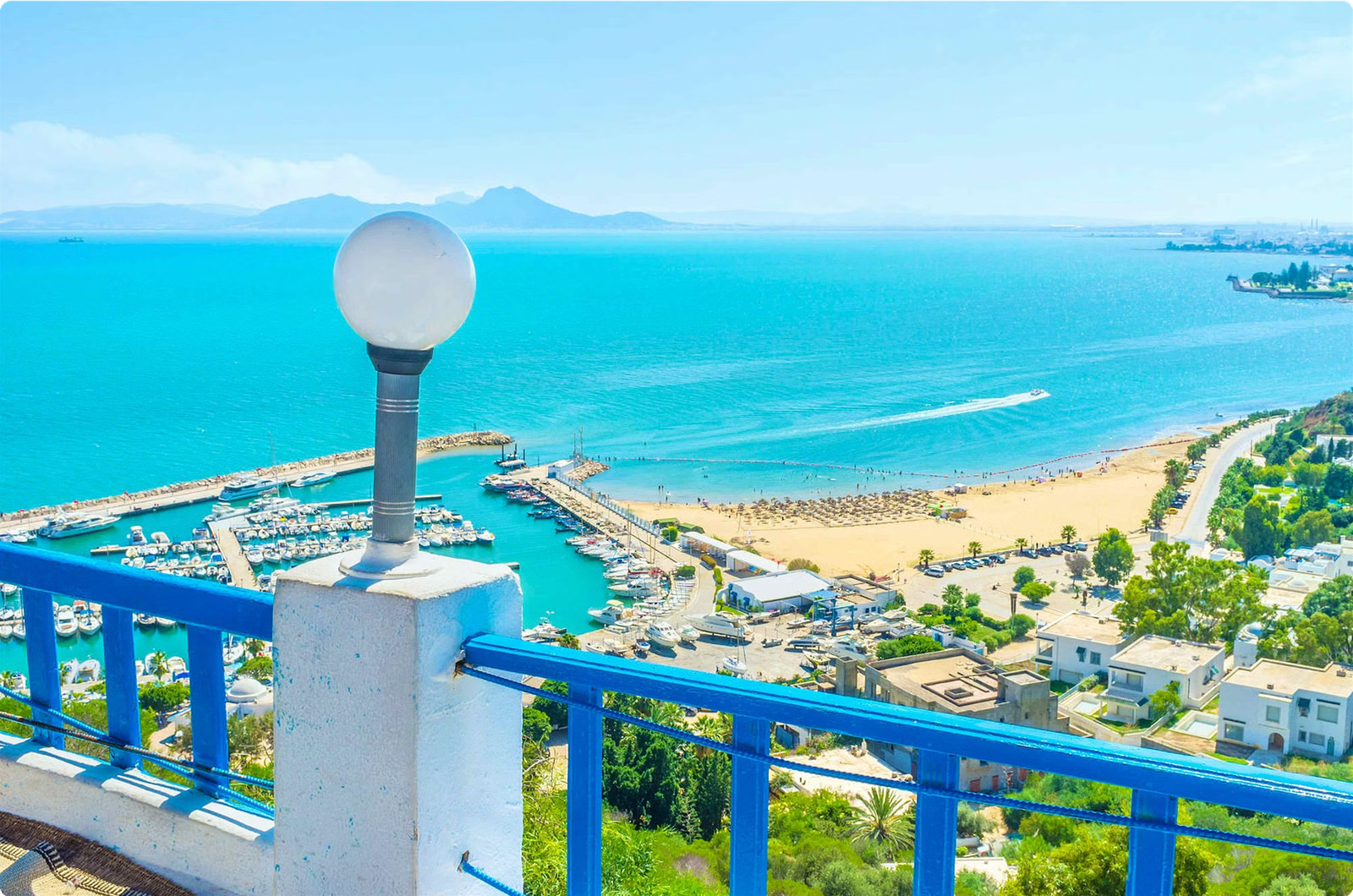
Djerba Island Beach
Djerba Island boasts pristine beaches with crystal-clear waters, making it a paradise for sun-seekers and water sports enthusiasts. The inviting coastline offers a perfect blend of relaxation and adventure, with opportunities for snorkeling, windsurfing, and simply basking in the warmth of the Tunisian sun.

Hammamet Beach
Hammamet Beach is famous for its golden sands, vibrant turquoise waters, and a bustling promenade lined with cafes and shops. It’s a popular destination for both locals and tourists, offering a range of water activities, lively entertainment, and a chance to experience the vibrant beach culture of Tunisia.
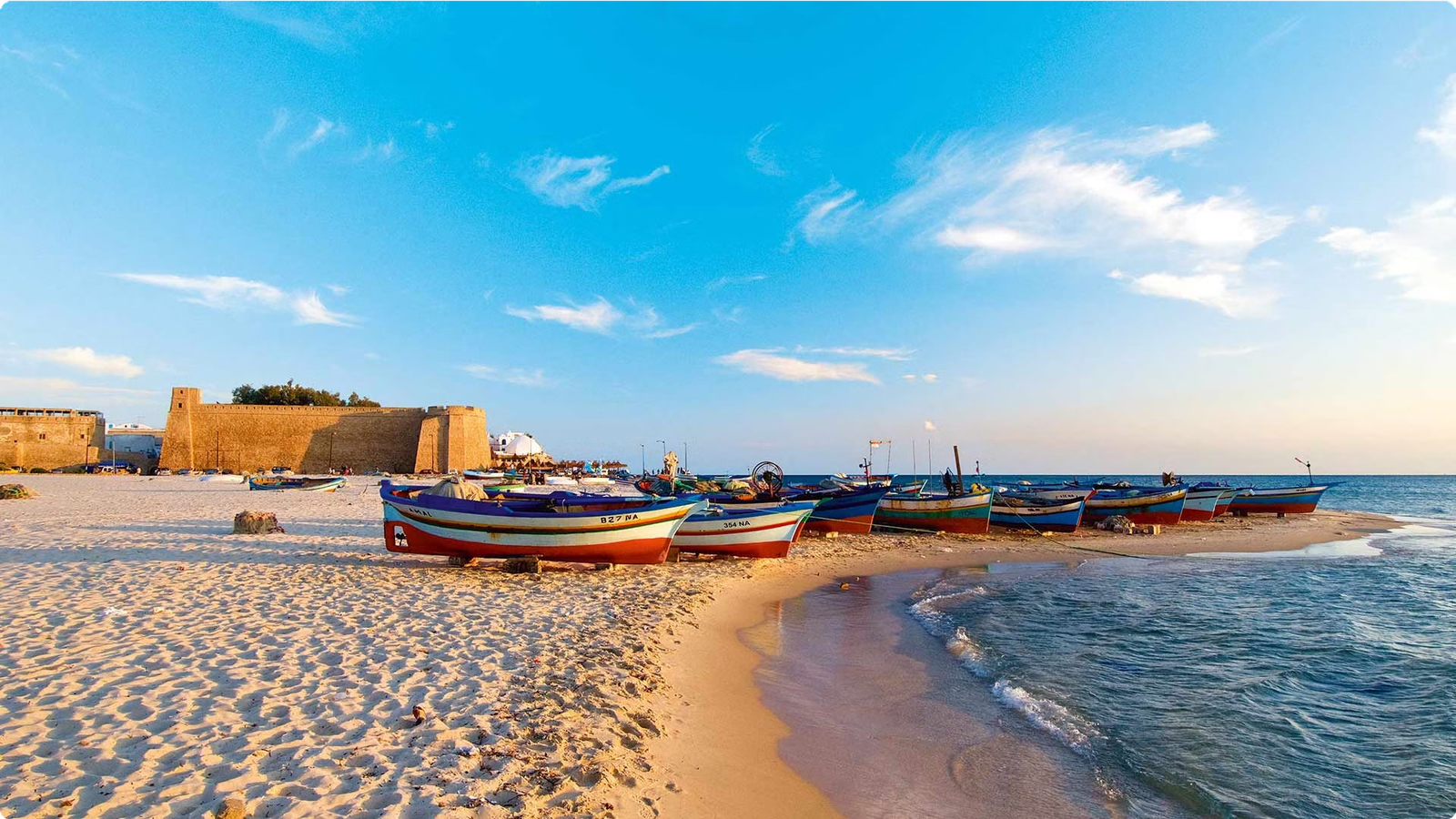
Sahara Desert in Tunisia
The Sahara Desert in Tunisia is a captivating expanse of endless sand dunes, rocky plateaus, and stunning oases. Covering a significant portion of southern Tunisia, the Sahara offers a unique and awe- inspiring landscape for adventurous travelers to explore.

Visitors can embark on camel treks to delve deep into the heart of the desert, where they can witness the breathtaking beauty of the shifting dunes and the silence of the vast desert plains. The Sahara also provides opportunities for stargazing, where the clear, unpolluted skies offer a mesmerizing view of the night sky.
Exploring the Sahara Desert allows travelers to immerse themselves in the rich Berber culture and traditions, as well as visit traditional desert villages to gain a deeper understanding of the desert- dwelling communities.
Medina of Tunis
The Medina of Tunis is the historical heart of the city and a UNESCO World Heritage Site. It is one of the best-preserved medieval cities in the Islamic world, with its narrow streets, traditional houses, and historic mosques. The Medina is a vibrant hub of activity, filled with souks, artisan workshops, cafes, and landmarks. Visitors can explore the intricate alleyways, admire the beautiful architecture, and experience the lively atmosphere of this ancient quarter.
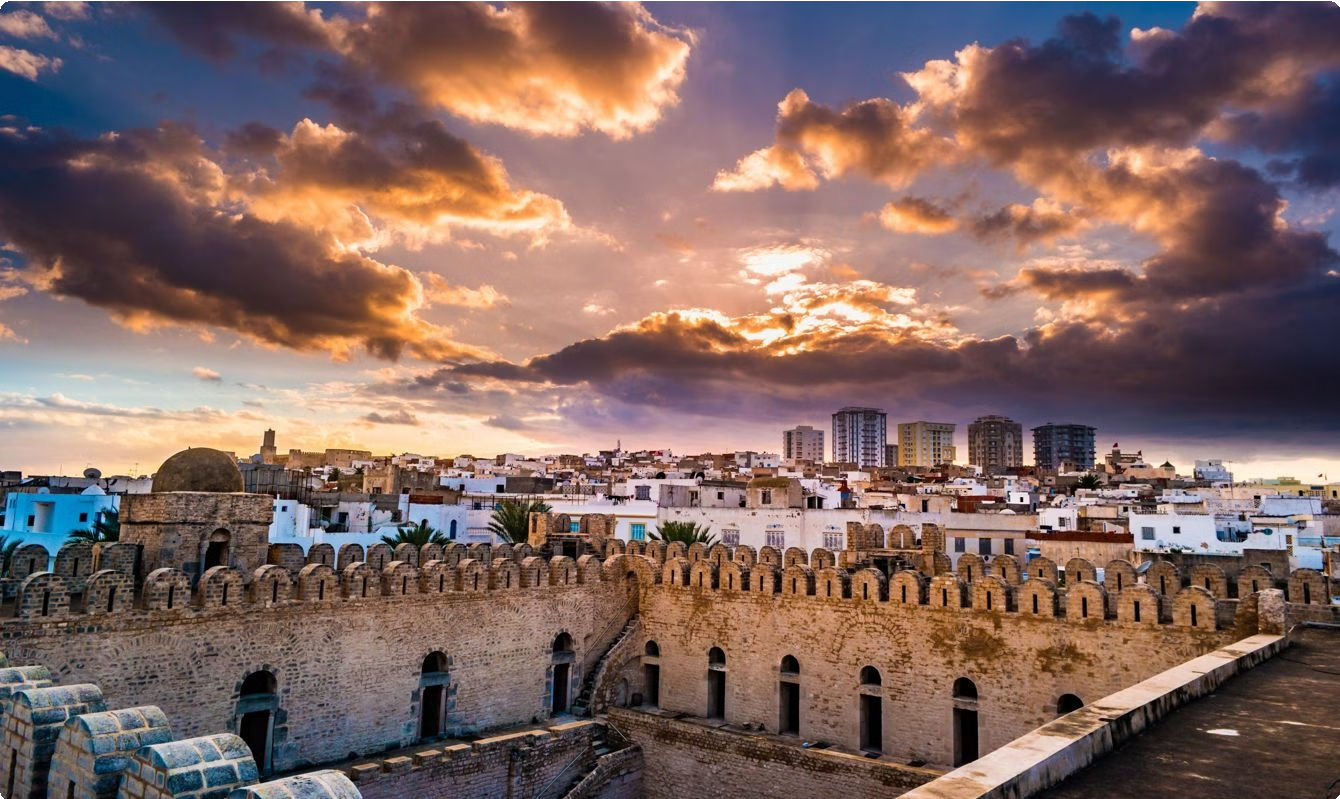
Key attractions within the Medina include the Zitouna Mosque, the Al-Zaytuna Mosque, and the Dar Ben Abdallah Museum. The area is also home to traditional markets selling authentic handicrafts, textiles, spices, and local produce. Walking through the Medina of Tunis is like stepping back in time and offers a fascinating glimpse into the rich history and culture of the city.
Carthage Ruins
Carthage, located near present-day Tunis, was once a powerful ancient city and a major center of the Phoenician and Punic civilizations. The ruins of Carthage offer a fascinating glimpse into its rich history and architectural heritage.

The archaeological site of Carthage includes the remnants of ancient buildings, such as the Byrsa Hill, the Antonine Baths, the Punic ports, and the Roman theater. Visitors can explore the ruins of this UNESCO World Heritage site and learn about its significance as a prominent trading hub and a battleground for competing empires.
Sidi Bou Said
Sidi Bou Said is a stunningly picturesque village located atop a steep cliff overlooking the Mediterranean Sea in northeastern Tunisia. Known for its charming cobblestone streets, whitewashed buildings adorned with blue doors and window shutters, and breathtaking views, Sidi Bou Said is a must-visit destination for travelers seeking beauty and tranquility.
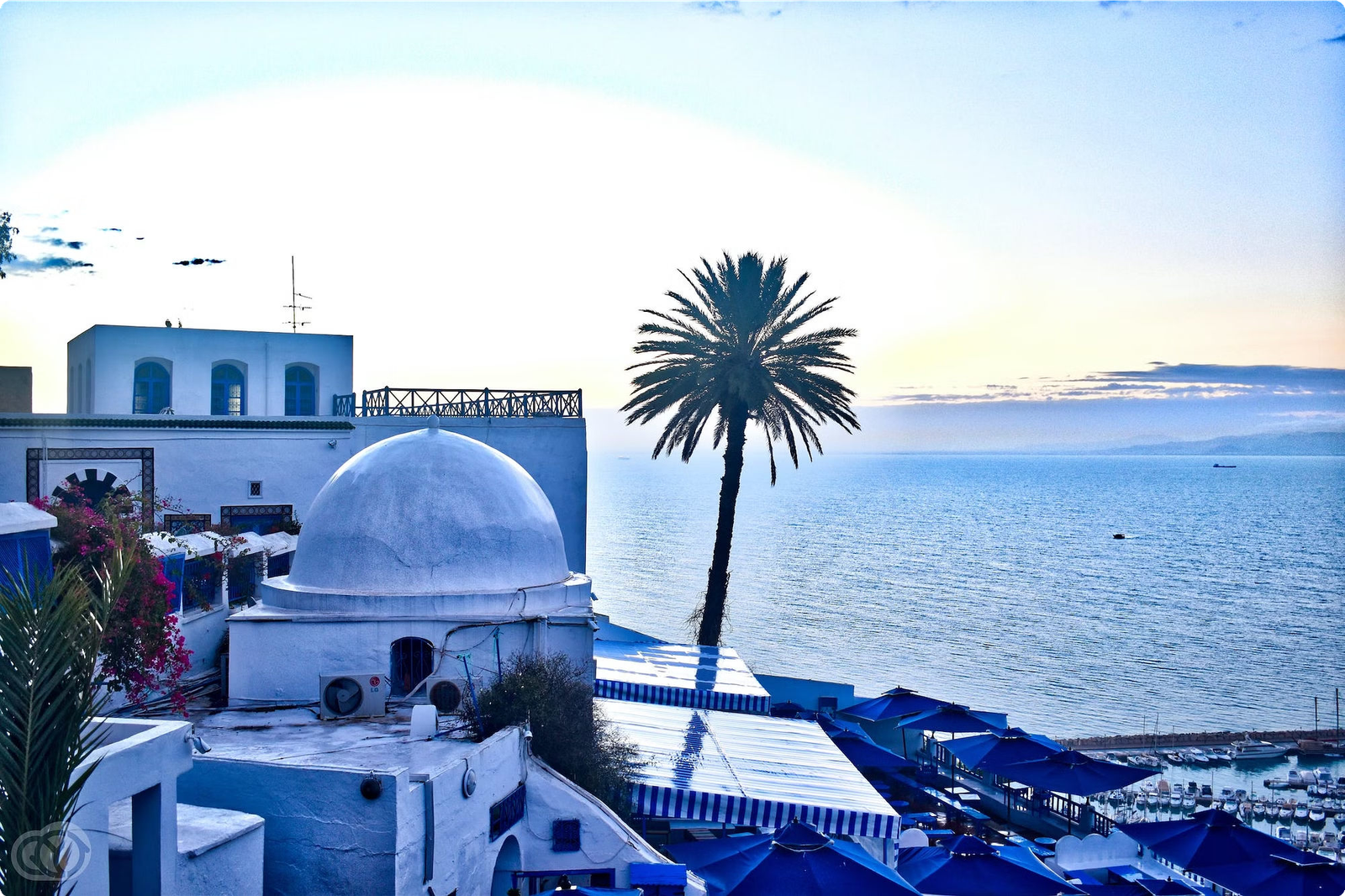
Visitors can explore art galleries, traditional Tunisian cafes, and handicraft shops as they meander through the narrow streets. The village exudes a sense of romance and relaxation, making it a popular spot for artists, photographers, and couples seeking a romantic getaway. Sidi Bou Said offers a perfect blend of history, culture, and stunning vistas, creating an unforgettable experience for all who visit.
Dougga Archaeological Site
Dougga, also known as Thugga, is an ancient Roman city situated in the mountains of northern Tunisia. It is a UNESCO World Heritage Site and is renowned for its remarkably well-preserved Roman ruins. The site features a theater, a Capitol, temples, and various residential areas, providing a fascinating glimpse into the urban layout and architectural excellence of the ancient city.
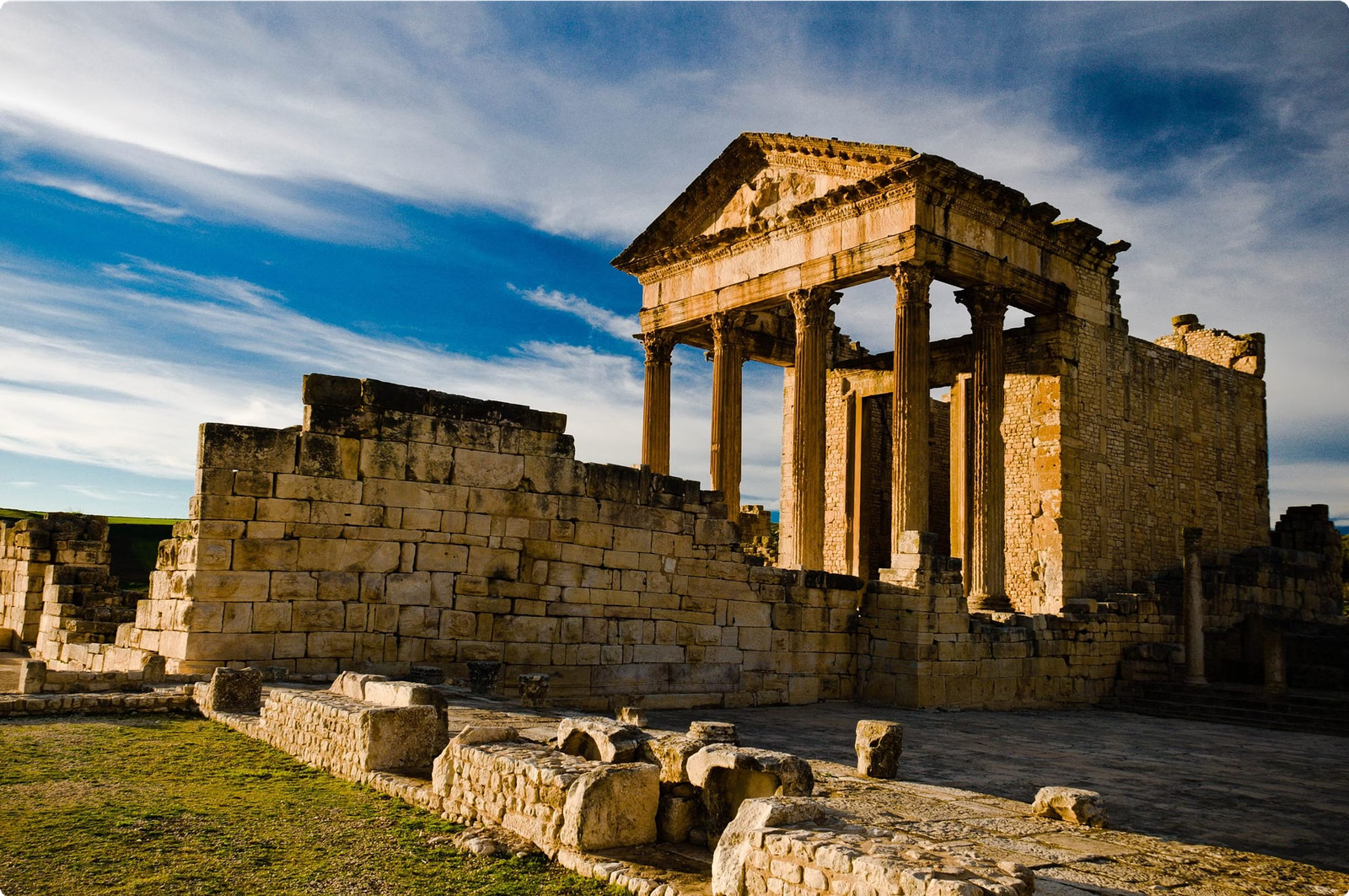
The most notable structures at the Dougga archaeological site include the Capitol building, which served as the center of the city’s political and religious activities, and the well-preserved theater, offering insight into the artistic and cultural life of Roman Dougga. Visitors can also admire the Mausoleum, the Temple of Saturn, and the impressive cisterns that supplied water to the city.
El Djem Amphitheatre
The El Djem Amphitheatre, located in the town of El Djem, Tunisia, is one of the most impressive and well-preserved Roman amphitheaters in the world. Built in the 3rd century, it has a capacity of up to 35,000 spectators. The amphitheater was used for gladiator contests and chariot races, as well as other public events and performances. The site is a UNESCO World Heritage site and is renowned for its grand architecture and historical significance.
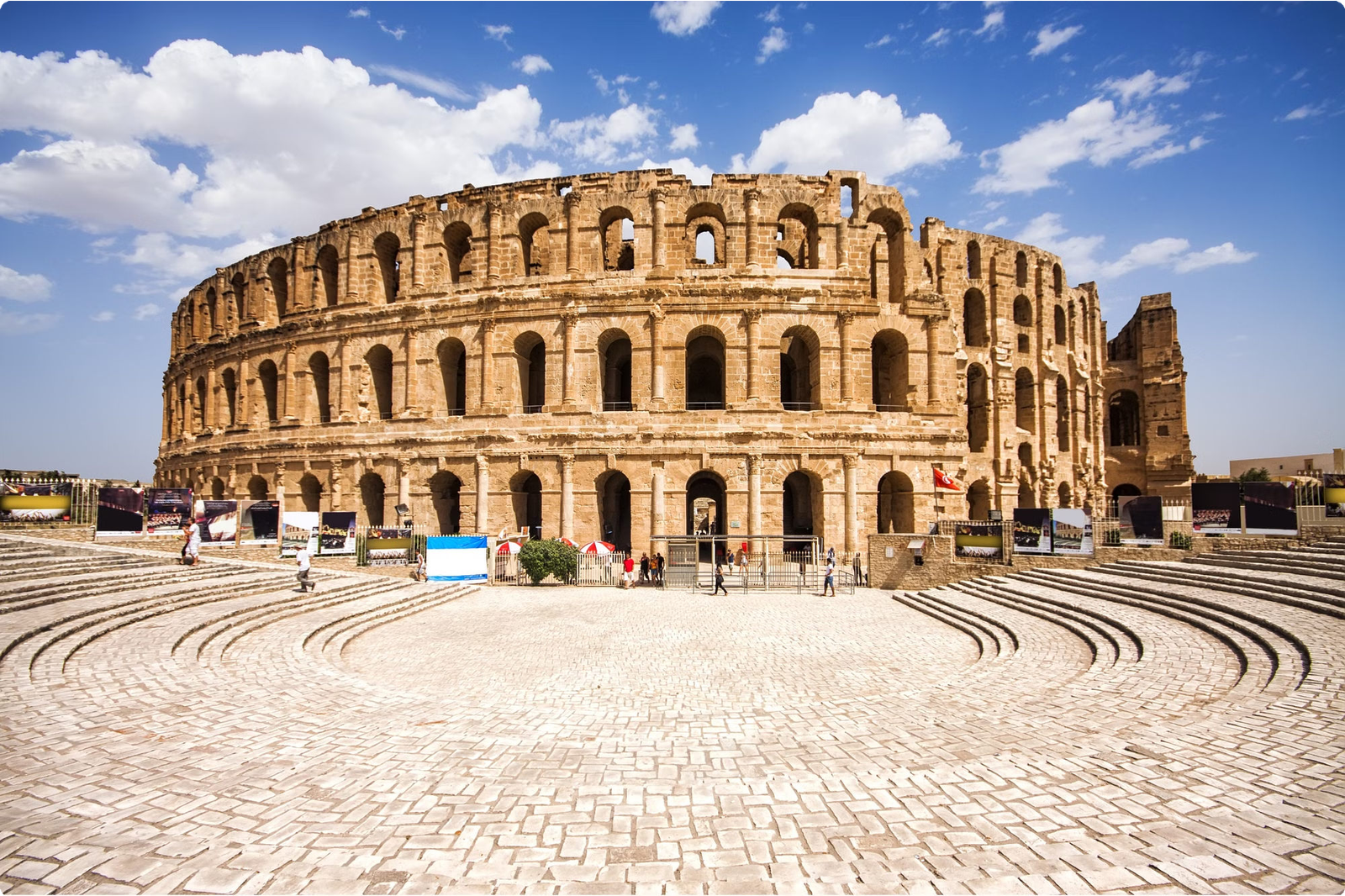
Visitors can explore the underground passages and chambers, along with the surrounding area, which offers stunning panoramic views of the amphitheater. The El Djem Amphitheatre is a must-visit for history enthusiasts, architecture lovers, and those seeking an awe-inspiring glimpse into ancient Roman entertainment and engineering.
Kairouan Great Mosque
The Kairouan Great Mosque, also known as the Mosque of Uqba, is one of the most significant mosques in Tunisia and North Africa. With its stunning architectural design and historical importance, it is a UNESCO World Heritage site. The mosque showcases intricate geometric patterns, beautiful domes, and exquisite calligraphy, reflecting the rich Islamic heritage of the region. Visitors can explore the vast
courtyard, the prayer hall, and the breathtaking minaret. The mosque also features a fascinating museum with ancient artifacts and manuscripts, offering insights into the religious and cultural significance of the site. It stands as a testament to the remarkable craftsmanship and spiritual devotion of the Islamic civilization.
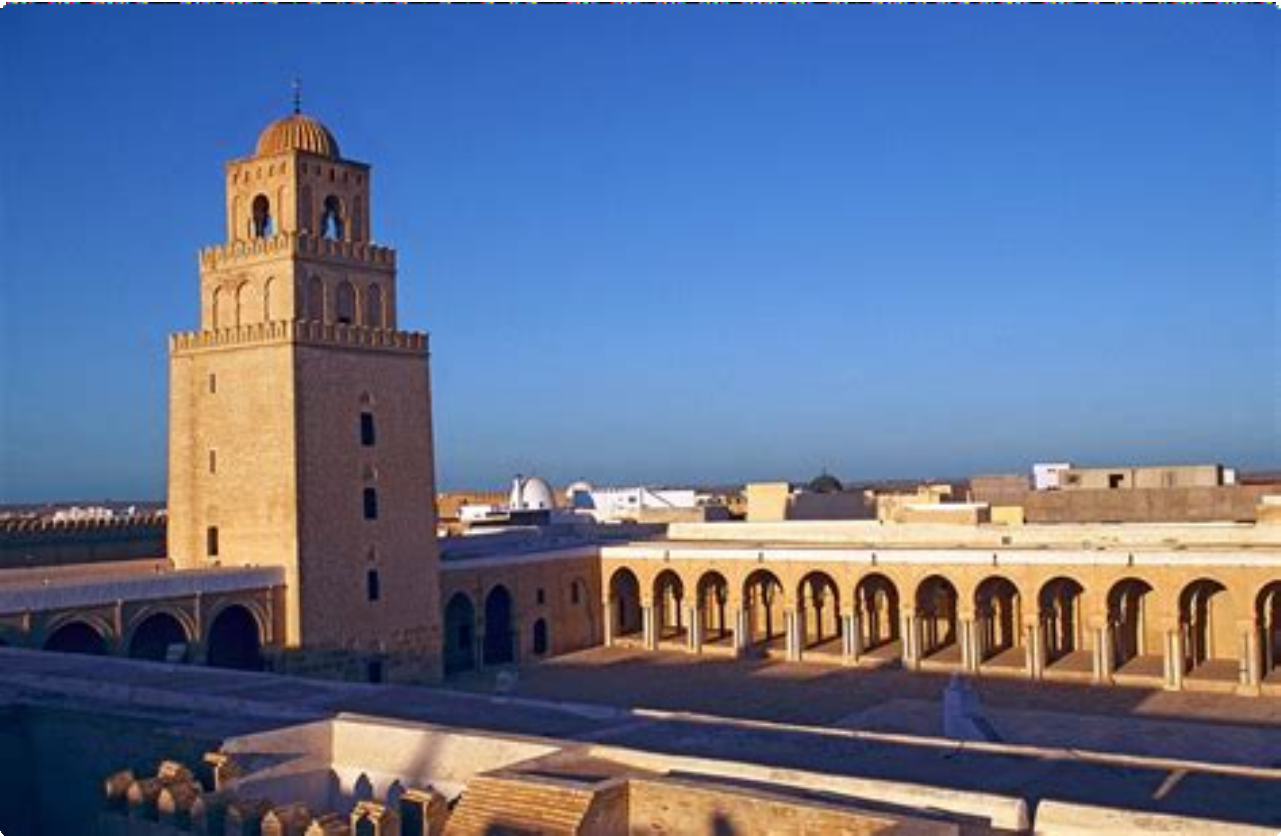
Bardo National Museum
The Bardo National Museum, located in Tunis, Tunisia, is renowned for its exceptional collection of ancient Roman mosaics. It is considered one of the most important museums in the Mediterranean region and is housed in a 19th-century palace with magnificent architecture.

The museum’s collection includes mosaics, sculptures, jewelry, and artifacts from ancient Carthage, as well as other significant historical pieces from across Tunisia. Visitors can immerse themselves in the rich history and culture of Tunisia while exploring the museum’s diverse exhibits.
The Bardo National Museum offers a captivating journey through Tunisia’s past, making it a must-visit destination for history enthusiasts and art lovers alike. Its extensive collection and stunning displays provide an in-depth look into the heritage and legacy of the region.
Djerba Island
Djerba Island, also known as the “Island of Dreams,” is the largest island of North Africa, located in the Gulf of Gabes, off the coast of Tunisia. It is renowned for its stunning sandy beaches, picturesque landscapes, and unique blend of ancient traditions and modern amenities.
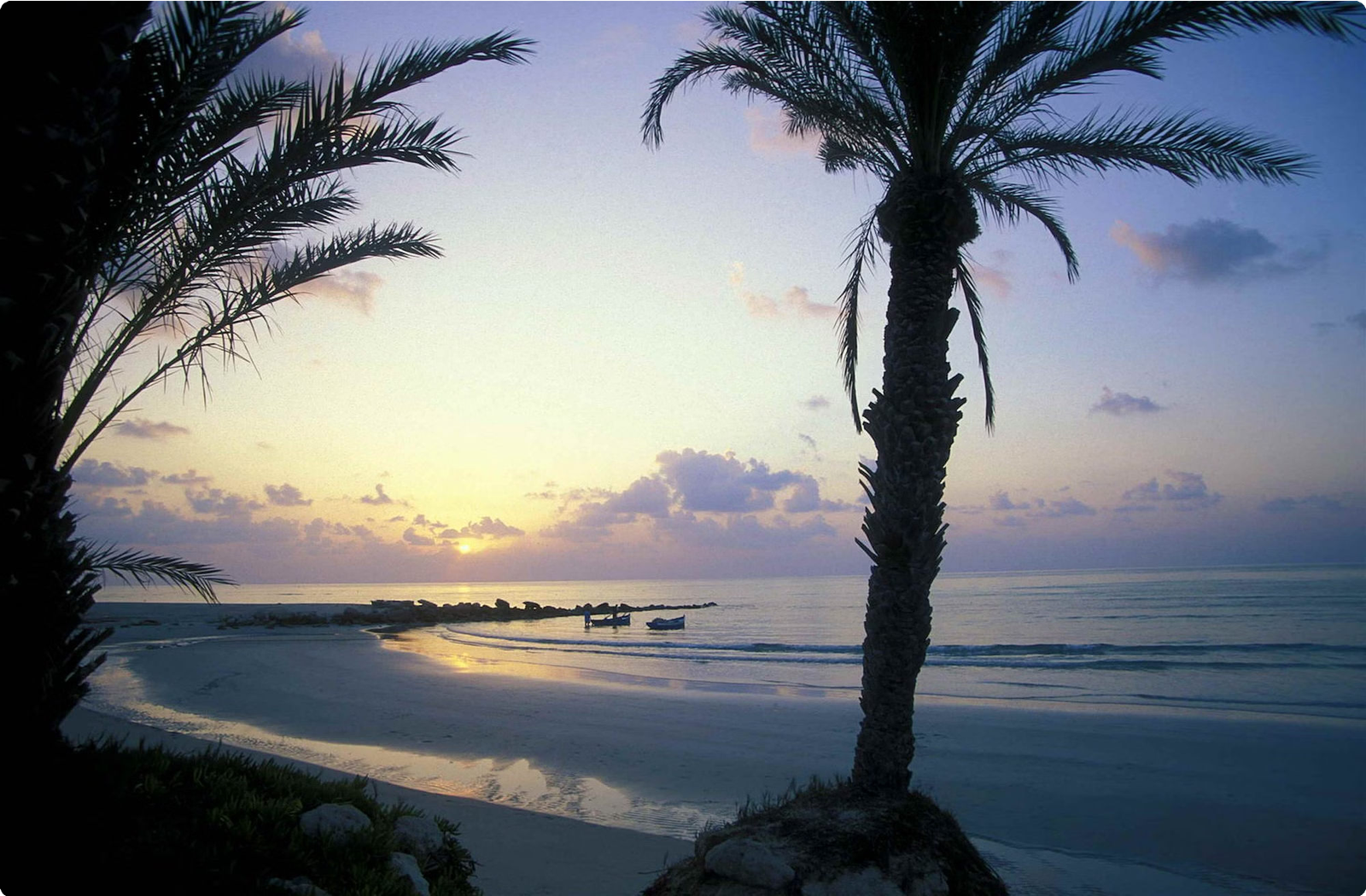
The island is famous for its white-washed buildings, colorful markets, and the historic Guellala Museum, which showcases the island’s rich history and culture. Visitors can explore traditional souks, where local artisans sell handmade pottery, textiles, and jewelry.
Djerba is also home to the El Ghriba Synagogue, one of the oldest synagogues in the world, drawing visitors interested in its rich Jewish heritage. The laid-back atmosphere, warm hospitality, and breathtaking sunsets make Djerba a must-visit destination for travelers seeking an authentic Tunisian experience.
Tozeur and the Chott el Djerid
Tozeur is a city in southwest Tunisia, known for its stunning desert landscapes and palm groves. The Chott el Djerid, situated nearby, is a large salt pan that creates a mesmerizing mirage effect when the heat rises. Visitors are enchanted by the unique beauty of the salt flats, especially during sunset when the colors of the sky reflect on the shimmering salt crystals. Tozeur is also famous for its traditional earthen architecture and ancient medina, providing a glimpse into Tunisia’s rich heritage and culture.

Exploring this region offers opportunities for camel treks, visits to local oases, and experiencing the traditional Berber way of life. The Chott el Djerid is a popular filming location and has been featured in several movies, adding to its allure. The desert areas surrounding Tozeur and the Chott el Djerid also offer stargazing experiences due to the lack of light pollution, making it an ideal location for nature enthusiasts and photographers.
Sousse and Port El Kantaoui
Sousse, located in eastern Tunisia, is known for its beautiful beaches, historic sites, and vibrant nightlife. The city is home to Port El Kantaoui, a luxurious tourist resort offering a marina, golf courses, and a wide range of water sports and recreational activities.

Visitors can explore the Medina of Sousse, a UNESCO World Heritage Site, and admire the impressive Ribat fortress. The city also boasts a rich cultural heritage, with museums, traditional markets, and charming old town streets lined with cafes and shops. Port El Kantaoui, on the other hand, is a modern resort area with upscale hotels, restaurants, and entertainment venues.
Travelers can enjoy the best of both worlds in Sousse and Port El Kantaoui, from relaxing on stunning beaches to discovering the region’s fascinating history and culture.
Conclusion
Tunisia is a land of rich history, diverse culture, and breathtaking landscapes. Whether you’re exploring the ancient ruins, savoring the flavors of Tunisian cuisine, or relaxing on the beautiful beaches, Tunisia offers a unique and unforgettable experience. The country’s vibrant cities, historic sites, and warm hospitality make it a must-visit destination for travelers from around the world. With its unique blend of Arab, Berber, and Mediterranean influences, Tunisia has something to offer for everyone. A trip to Tunisia promises to be an enriching and memorable adventure.
